Small evergreen shrubs are precious plants because they provide year-round interest. When the vast majority of plants wither away or go into hibernation, they keep the garden’s structure alive and visible and make being outside more interesting.
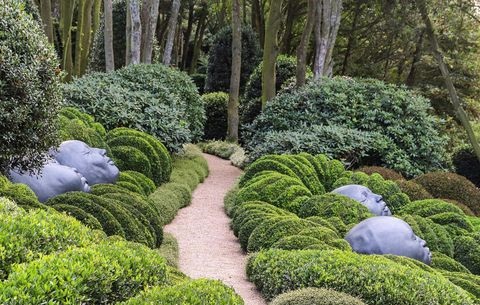
Even people who are not big lovers of nature or do not notice the plants around them can still feel that unique atmosphere that evergreen plants bring into existence during the winter.
Useful Little Charmers
Although small, the plants that we will mention in this article grow tall enough that they will be able to fulfill the role for which evergreen shrubs are used, that of a living fence. Moreover, it is their most common use since they are more pleasant, natural, and attractive than iron and concrete barriers.
But that is not their only place of use. Some of these evergreen shrubs are flowering, while others have decorative leaves, which makes them good additions to mass and foundation planting, rock gardens, landscape gardens, cottage gardens, etc.
Although these shrubs are from different families and genera, what almost all of them have in common, besides the evergreen foliage, of course, is their love for (slightly) acidic soils. Not owning that type of soil shouldn’t be an obstacle for anyone wanting to turn their garden into a green oasis for enjoyment since the ground can be acidified by mulching with pine needles, for example.
Compact Oregon Holly Grape (Mahonia Aquifolium ‘Compactum’)
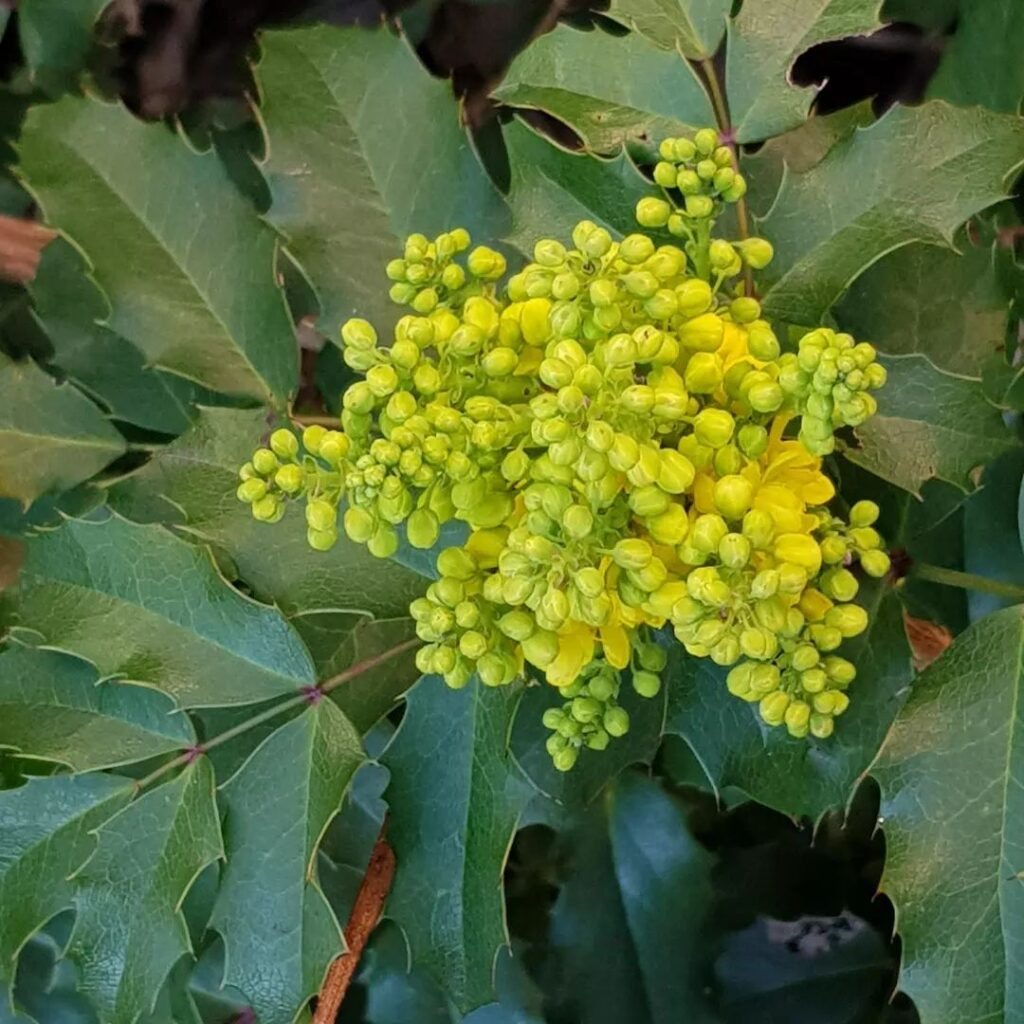
Initially found in the area from California to British Columbia, Compact Oregon Holly Grape is a broadleaf evergreen shrub from the barberry family (Berberidaceae). It grows to a height of up to six feet and does not require special care but is a very slow-growing species.
Dark green leaves are oddly pinnate and consist of five to nine leathery, oblong, glossy leaflets with prickly teeth on the edges.
In fact, the species name aquifolium comes from the Latin words acus (needle) and folium (leaf) because of the spiny leaves. This plant is sometimes mistaken for common holly (Ilex aquifolium) because of the similar foliage. One easy way to distinguish between these two holly plants is the color of their fruit: common holly produces red berries, while Mahonia aquifolium has black, grayish-blue ones.
During the winter, the foliage takes on a bronze-brownish color.
Yellow flowers are gathered in upright, dense, and clustered inflorescences. Insects, especially bees, visit them throughout the day to collect lots of nectar and pollen.
Compact Oregon holly grape blooms in March and April, after which it forms the aforementioned small fruit. The berries, which have a wax coating and remain on the plant throughout the summer, are sour and astringent and aren’t edible raw because they can cause nausea.
The delightful appearance and color of the leaves and the beautiful flowers make it one of the most desirable compact evergreen shrubs in every garden. Still, since it has a high tolerance to air pollution, it is chiefly recommended for planting in city gardens.
This compact shrub is not picky about its position. Although you will also have no problem growing it in a sunny place, the plant prefers partial shade with a few hours of full sun.
It thrives well on loose and slightly moist acidic soils, but even ordinary garden soil with the addition of some sand will do.
When the plant is young, frequent and abundant watering is necessary, especially during the dry summer days.
Related: Giving the Green Light: 11 Different Types Of Dark Green Plants
Mountain Laurel (Kalmia Latifolia)
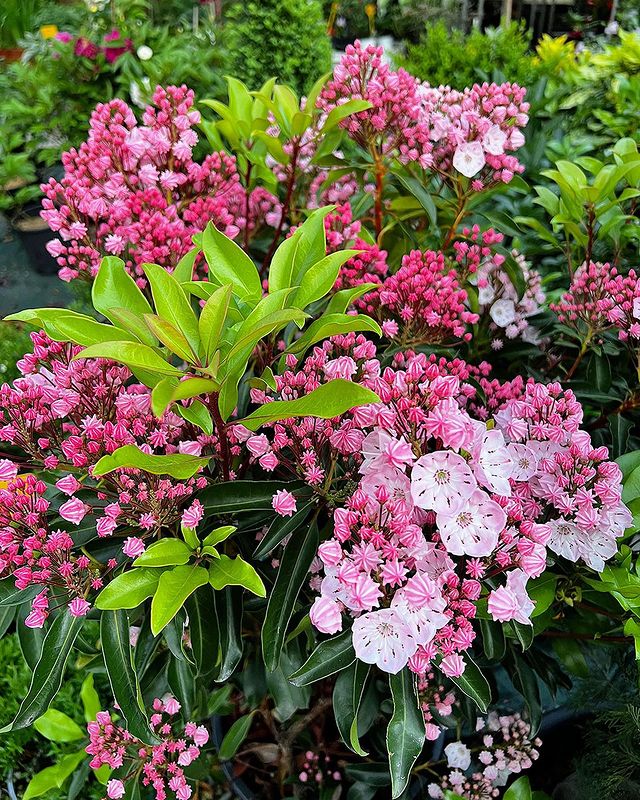
Mountain laurel is an evergreen shrub from the heather family (Ericaceae). This plant will provide a natural fireworks display of pink, red or white flowers in late spring. Its up-to-one-inch, hairy, glandular flowers grow on long stalks, gracefully clustered in large racemes.
Highly branched and densely stemmed, Kalmia latifolia grows up to 15 feet in height and width.
Apart from its stunning flowers, the plant attracts attention with its leaves. They are oval or elliptically elongated, alternately arranged on irregular spines. The foliage grows on short petioles and can be up to five inches long and two inches wide. The leaves’ glossy, dark green upper surface provides an excellent contrast to the yellowish green reverse.
The Latin name of the genus Kalmia refers to the Swedish-Finnish botanist Pehr Kalm, while the species name comes from the Latin words latus (wide) and folium (leaf).
Plant Mountain laurel in slightly shady areas. It grows best in permeable, acidic soil with a pH between 5.0 and 6.0. If the pH is above 6, you will have to add ammonium sulfate or some nitrogen-based fertilizer to the soil at a depth of about 12 inches.
It can tolerate full sun if the soil remains moist enough, but too much afternoon sun during the summer can damage the plant.
Kalmia latifolia requires a lot of water, so it must be watered regularly, especially when it is young (every three to four days). However, too much water can cause the appearance of fungal diseases, so be careful.
You can propagate the plant by seeds and cuttings in spring or by cuttings in early summer.
All parts of the plant are poisonous to both humans and pets.
Winter Heath (Erica Carnea)
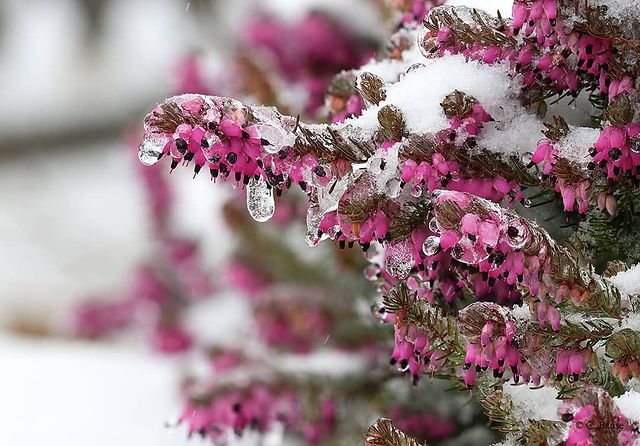
Winter heath is a small evergreen shrub belonging to the heather family (Ericaceae), which has almost 900 species, most of which grow in the territory of South Africa.
In addition to the evergreen leaves that will provide year-round interest in any garden, this plant’s advantage is that it blooms from February to April, regardless of the snow. And when the winter is milder, you can expect it to flower even earlier!
However, they experience full bloom and lavish their visual dominance in March, when the vivid and showy flowers fully cover the ground.
The bush is prostrate, creeping or ascending, forming low and thin, mostly naked, easily breakable branches. It grows up to one foot tall.
Although small and seemingly weak, this flowering shrub is a tough fighter resistant to low temperatures. Its well-developed root system, with numerous strong veins, binds it well to the loose soil on the cliffs. Precisely because of this property, numerous cultivars have been developed, intended, above all, for greenifying rock gardens.
This plant’s requirement for an acidic substrate is a limiting factor, so it should be combined with species of similar requirements. Bisexual flowers located on short stalks in the axils of the highest leaves are gathered in clusters of two to four and usually hang on one side.
The fruit is a spherical capsule that contains several tiny, elongated, brown seeds in four compartments and ripens in May and June.
Calcareous, sandy to clayey, dry or wetter soils suit it.
Winter heath is considered an excellent plant for producing honey, although bees often do not fully utilize it due to early flowering and cold weather. Its honey is highly valued for its nutritional and medicinal value, while the tea is used to treat rheumatism and kidney and bladder diseases. The tea also purifies the blood and thus helps with eczema, skin rashes, and gout.
You can propagate Winter heather by seeds or cuttings in the summer.
Related: 17 Amazing Types Of Amazon Plants (Including Photos)
Rhododendron Maximum Compacta
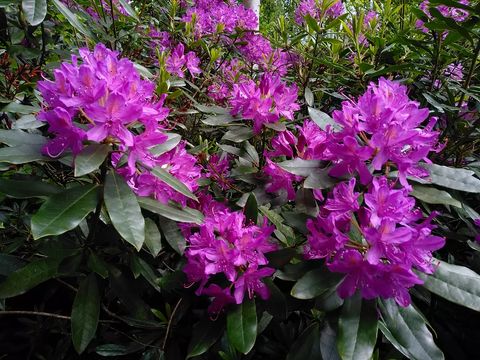
Rhododendron maximum compacta is another beautiful plant on our list of small evergreen shrubs. Evident from its name, this compact shrub is a smaller relative of Rhododendron maximum, which is better known as Great rosebay, White laurel, and Great laurel.
This plant has many upright or rising, thick branches. It is suitable for growing in pots as it grows only a few feet in width and height, and its dome-like shape will make it a perfect addition to a cottage garden, landscape garden, and even borders.
Winter hardy in zones 3 to 7, these shade-loving plants are grown for the magnificent beauty of their bell-shaped flowers, which are lush, densely clustered in inflorescences, and appear in white, pink, and purple.
Apart from their dislike for the full sun that can burn the typical rhododendron elliptical, leathery, dark green foliage, they are also not big fans of wind, so you should consider that when choosing a place where to plant them.
Their root system is shallow but strong, and since they do not tolerate drought, the plants need to be watered so that the soil never completely dries out, especially during the hot summer months. In addition, because of the shallowness of the roots, it is essential to water them thoroughly while they are still in their early phases to develop sturdy and extensive roots.
Compact maximum rhododendron in cultivation requires well-drained and humus soil, which must be acidic. No pruning is necessary, but if you wish to do so, do it after the blooming season.
Blueberry Delight Juniper (Juniperus Communis ‘AmiDak’)
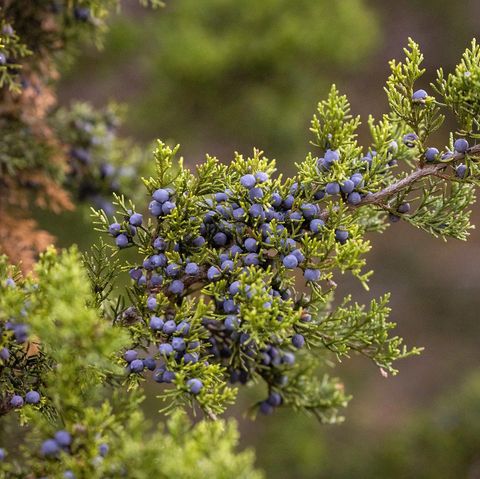
Blueberry delight juniper is a hardy evergreen shrub from the cypress family (Cupressaceae). It is a low-growing ground cover that will spread 12 feet wide and 3 to 4 feet high.
Suppose you are excited about the idea of a landscape garden. In that case, Blueberry Delight Juniper is a great option not only because of its sprawling habit but because it is also a low-maintenance plant.
Juniperus communis ‘AmiDak’, as it is called botanically, features a combination of upright and arching branches. Its root system is well-branched, with the main vein.
Its short, stiff, green needles sport a silvery blue streak on the upper side. They are densely arranged, and each vertebra has three of them. To add even more to their attraction, they turn to a copperish color in fall.
The fruits are one-and-a-half-inch long berries borne on short stalks. Each of them contains three hard, ovoid brown seeds. Commonly called juniper berries, the fruit is ripe from late spring to winter and is another reason this evergreen conifer shrub will captivate many. It is a deer-resistant plant, but birds like to feed on its berries.
Blueberry delight juniper tolerates drought, severe frost, and high urban pollution.
It will not protest against poor soils or ask you to fertilize it much, if any. Yet, you need to provide it with two things: lots of sunlight and well-draining soil.
Native to Eastern US, this small juniper shrub grows very slowly but can live for a very long time, reportedly up to 30 years.
Japanese Holly (Ilex Crenata)
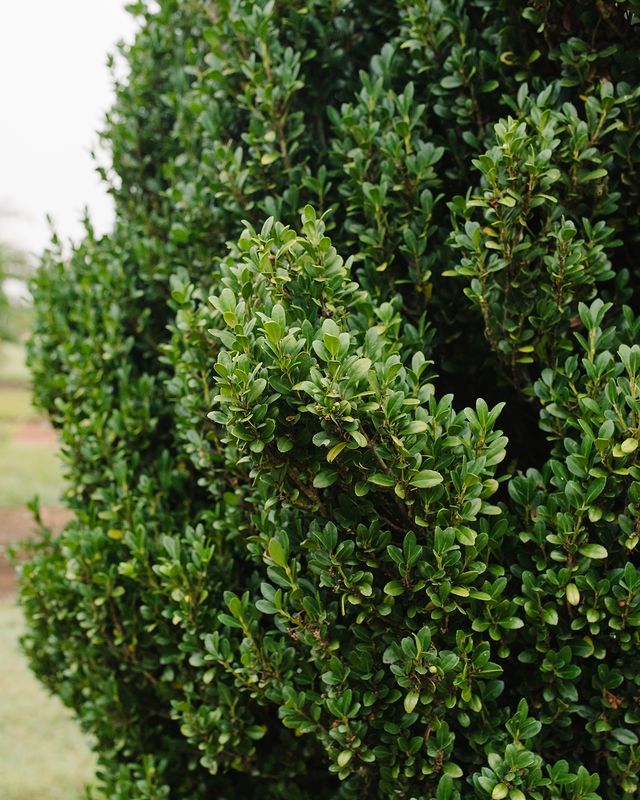
Japanese holly is a plant from the Aquifoliaceae family, indigenous to Japan and China. Its Japanese name, inu tsuge, means false boxwood, and in English, it is sometimes referred to as Box-leaved holly.
However, it doesn’t possess the fame that plants from the Buxus genus do, but its compact and rounded growth habit allows it to be used in many of the same environments as boxwood plants – shrub borders, hedges, and foundation plantings.
Even though this rabbit and the deer-resistant plant is a slow-growing species, it is considered invasive in certain parts of the world, so keep an eye on its growth.
Japanese holly is a subtle plant that won’t draw much attention from afar, although it can grow up to 10 feet tall and 8 feet wide. Its one-inch long shiny evergreen foliage is very dense, which makes this plant a great candidate for pruning and shaping.
Small white flowers bloom in late spring or early summer, followed by small black berries. Berries are kind of subtle as well, primarily because of their color but also because they are mostly tucked away under the thick growth of the dark green foliage.
Japanese holly is a species that likes many things in moderation: moderate climate, humidity, and water.
But like many plants from our list of small evergreen shrubs that rely on a well-developed and strong root system for a long and healthy life, they need to be watered a little more often when young.
In addition, it is desirable to mulch the ground around the plant to maintain the appropriate moisture level and avoid overwatering because this evergreen plant cannot tolerate a high groundwater level.
You don’t need to worry much about its soil requirements, as average, well-draining soil will be enough. In a best-case scenario, though, you will grow it in slightly acidic soil.
Related: 21 Types Of Fuchsia Plants & Reasons Why Fuchsia Plants Are So Popular (With Pictures)
Boxwood Shrubs (Buxus spp.)
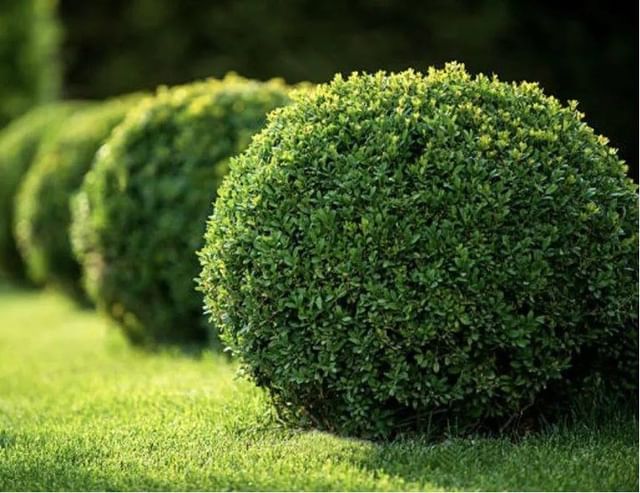
Boxwood shrubs are one of the most famous evergreen hedges used in gardening as far back as the Roman Empire.
Buxus is a genus of about 70 species of large shrubs and small trees characterized by leathery, shiny leaves, which are dark green on the face and light green on the reverse. Plants from this genus bloom in early spring with unsightly, greenish-yellow flowers that give way to light brown fruit containing several seeds.
These evergreen plants owe their popularity to tradition and the many possibilities of application in horticulture. They can be used as independent plants or in combination with other species.
Since they tolerate pruning very well, boxwoods are used in formal gardening, where they are pruned into desired shapes creating all kinds of landscapes and labyrinths.
Pruning is done at the end of spring, encouraging the plant’s dense growth habit even more.
A large number of cultivars have been developed, some of which are:
- ‘Angustifolia’ – mostly double-rowed, oblong leaves, one to one and a half inch long
- ‘Argentea marginata’ – the edges of the leaves are silvery white
- ‘Aureo marginata’ – the edges of the leaves are golden yellow
- ‘Suffruticosa’ – dwarf growth, up to three feet high.
Boxwood evergreen shrubs have upright growth and form very branched and dense shoots. The most famous representative of the genus, the common box (Buxus sempervirens), grows up to 12 feet tall.
The biggest enemy of boxwood in recent years has been a dangerous pest – the boxwood moth (Cydalima perspectalis), which can completely destroy an adult, well-developed plant in just a few days.
If you notice these tiny animals devouring your plant, manually remove as many of them as you can. After that, you should spray insecticide containing Bacillus thuringiensis over the entire plant. However, as boxwood moths can lay eggs more than once during the season, repeated spraying is advised.
Boxwood shrubs are well suited in partial shade, although they can also grow in a sunny area if the soil is moist. They prefer deep, neutral to alkaline, well-drained soil.
Their dense foliage and strong roots are resistant to low temperatures, drought, and urban pollution.
They grow very slowly, but they more than make it with a long lifespan, which can be as long as 600 years.
Dwarf Evergreen Shrubs
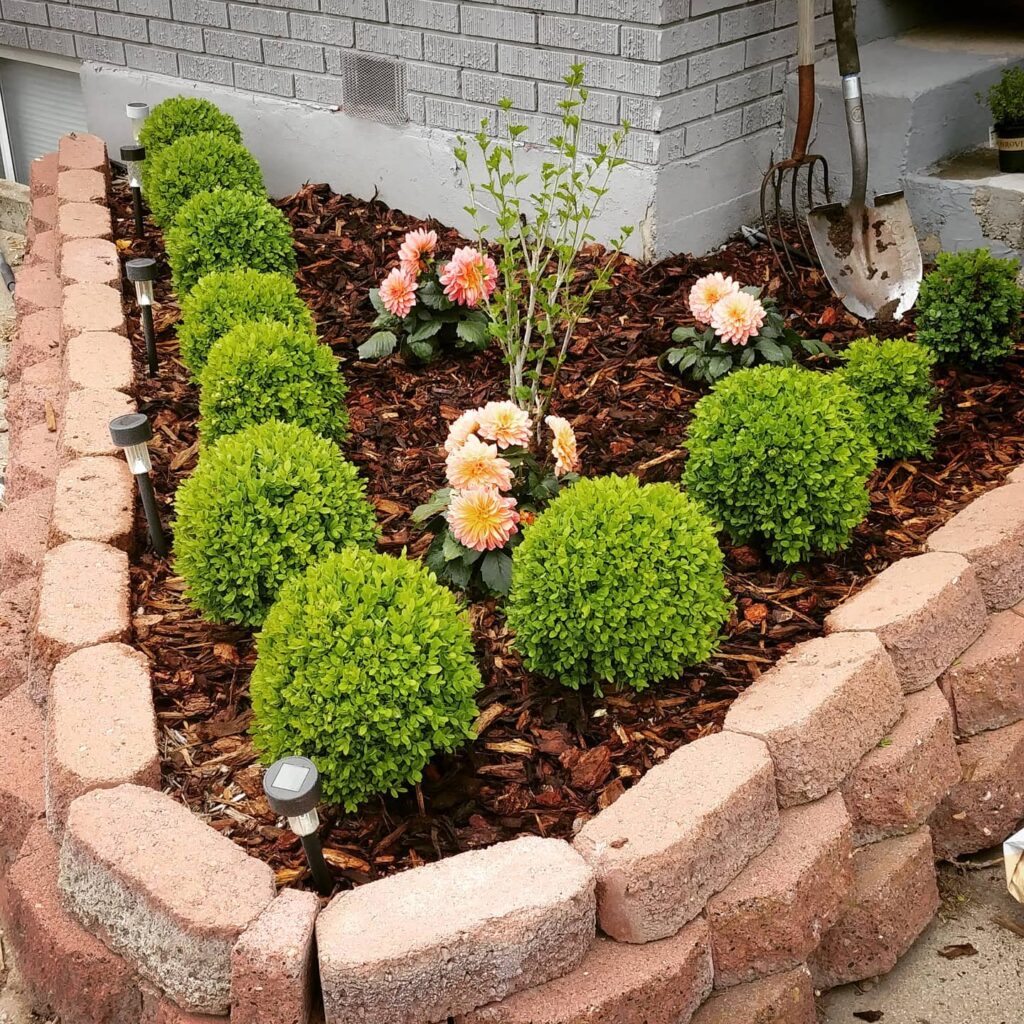
So far, we have talked about small evergreen shrubs, which, although bearing the epithet small, can serve in many different environments.
The next group of plants is dwarf shrubs and trees, specimens rarely used as hedges and borders but more as a foundation, accent, and garden plants.
Dwarf Rhododendron Bushes
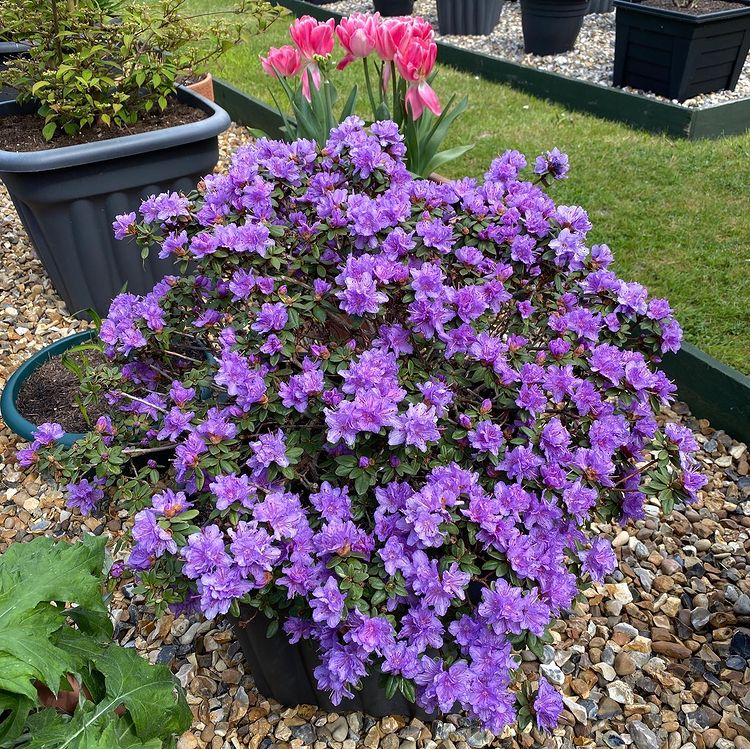
Are you a person who loves rhododendrons but doesn’t have a big enough garden to accommodate a regular-sized one? Or would you just like to enjoy the attraction that is rhododendrons but only on a smaller scale?
Rarely reaching more than three feet, dwarf rhododendrons are some of the most attractive flowering evergreen shrubs. They put a dazzling display of color in late spring with their tubular flowers.
Dwarf Japanese Garden Juniper (Juniper Procumbens ‘Nana’)
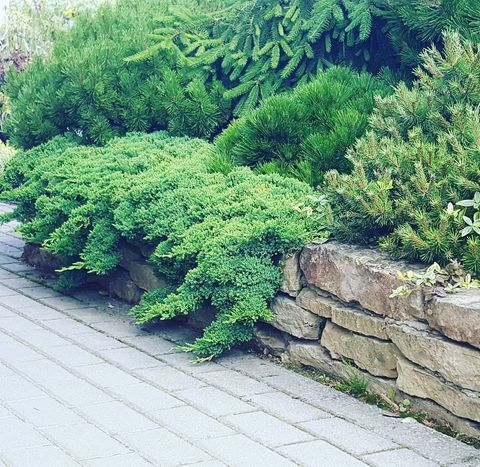
Its bluish-green foliage that turns slightly purplish in the winter and ground-spreading growing habit makes Dwarf Japanese garden juniper a star of any rock garden. But any open space fully exposed to the sun is good for it as it likes to slowly but surely cover the ground.
Dwarf Indica Azalea
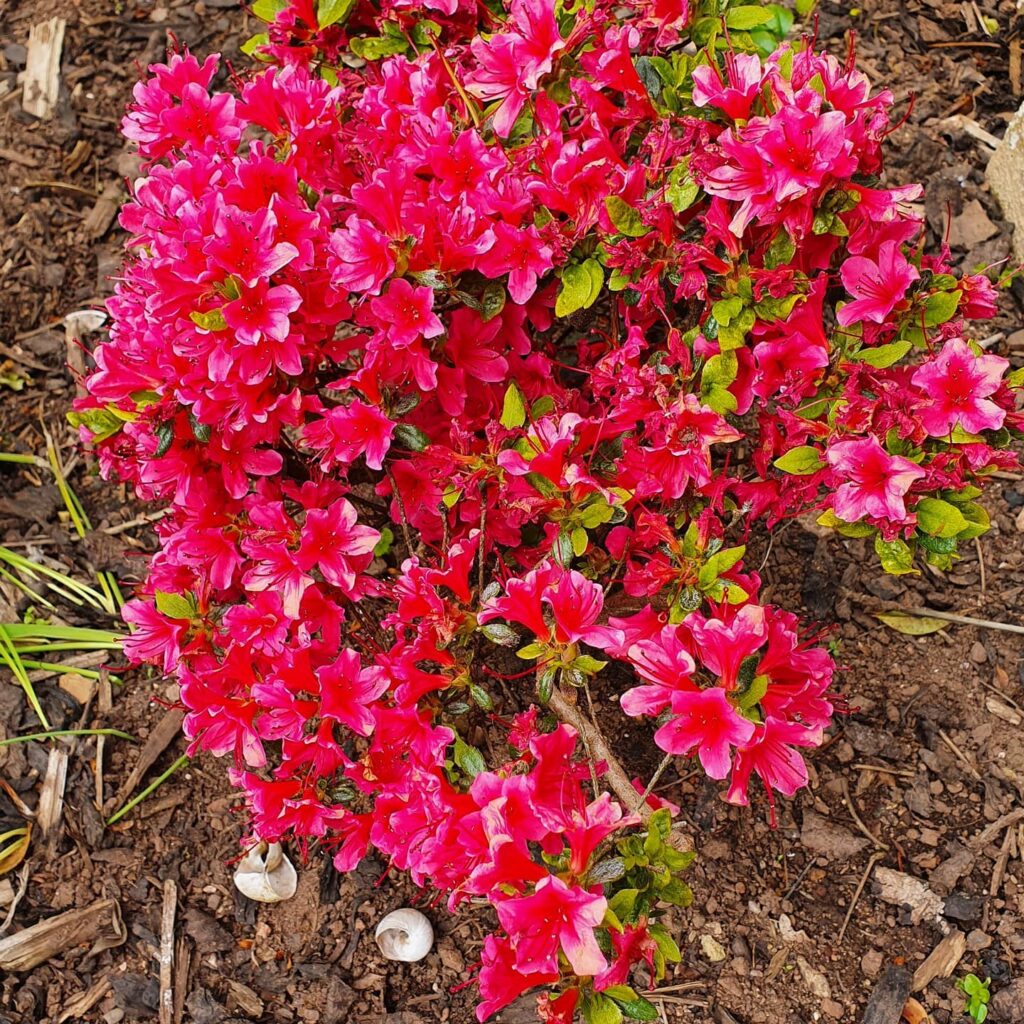
Every dedicated gardener wishes to have a plant in the garden that takes your breath away with its beauty during the flowering season. If you are interested in growing tiny shrubs, there’s no better way to do that but with a great ornamental plant, Dwarf Indica azalea.
Densely gathered in inflorescences, its lush and colorful flowers will delight many onlookers in late spring.
Apart from the amazing pink and white blossoms, this dwarf, evergreen shrub has a compact and spreading growth habit and reaches a maximum height and width of just two feet, making it an ideal candidate for foundation planting.
Dwarf Norway Spruce (Picea Abies ‘Pumila’)
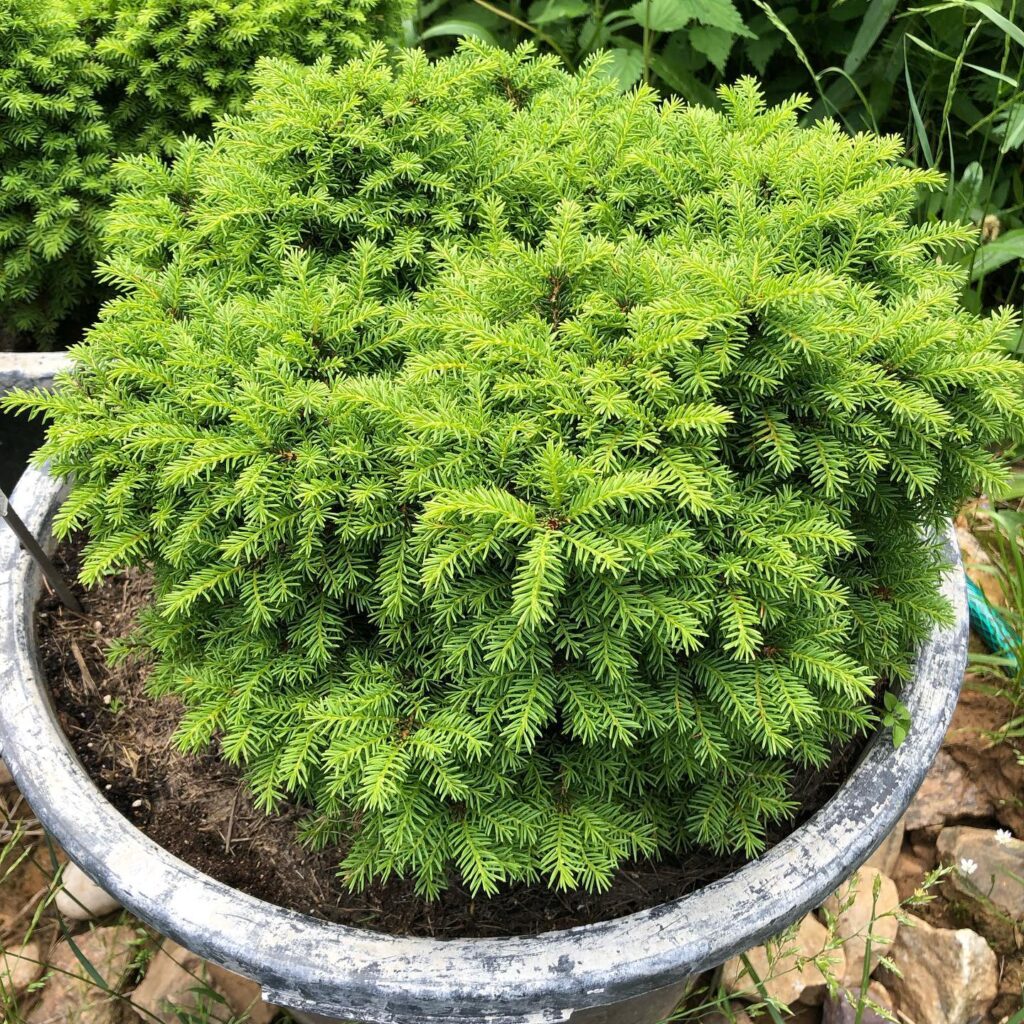
Mainly used as an accent plant because of its emerald green needles and purple cones, Dwarf Norway spruce is a species that naturally grows into a round shape. In addition, this conifer shrub spreads horizontally to just three feet and vertically to two, so you won’t have to do much or any pruning to bring to the fore plant’s highly ornamental value for which it’s prized.
And it gets even better since these small spruce shrubs have elementary care requirements: full to partial sun, moderate watering, most types of well-draining soil, and fertilization just every two to three years.
Dwarf Boxwood
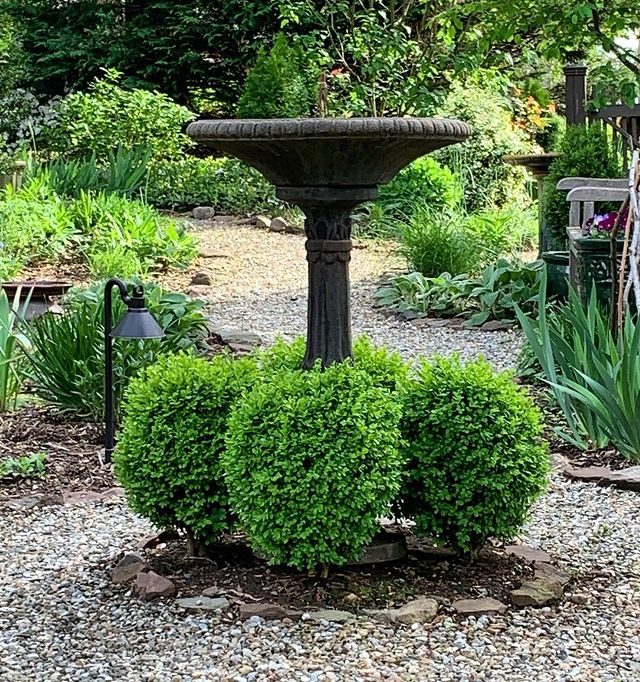
Although their “larger” cousins are quite in demand, these compact boxwood shrubs are one of the most popular choices for topiary gardening and formal landscaping.
Dwarf boxwoods are multi-stemmed plants that will form small tufts of glossy, dense foliage even if not particularly looked after.
However, if you are not planning on shaping a boxwood shrub into some shape, whether it is the dwarf variety or not, why even grow it then?
Dwarf Alberta Spruce (Picea Glauca ‘Conica’)
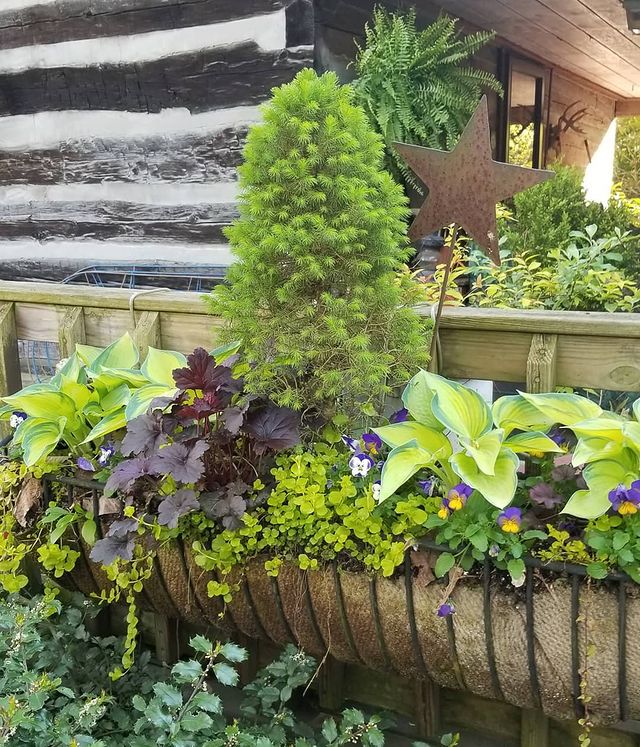
Dwarf Alberta spruce is one of the best small spruce shrubs with the classic Christmas tree look. At 13 feet, it might sound strange that it is called a dwarf, but some of its relatives easily grow over 100 feet.
Dwarf Alberta spruce doesn’t produce pine cones often, but it will fit in great as a foundation plant with the soft look and pyramidal and properly branched top.
They’re at their happiest when planted in full sun, but the sun shouldn’t be as hot as these dwarf trees in cold climates.
The list of small evergreen shrubs is much longer than mentioned above, so please check out the video to see even more!

Frequently Asked Questions
What are the most popular evergreen shrubs?
Although we could make this list extremely long because there are just so many well-liked evergreen shrubs, some of the most popular ones are: Rhododendron (Rhododendron spp.), Photinia (Photinia spp.), boxwood trees, and shrubs (Buxus spp.), compact wintercreeper shrubs (Euonymus fortunei), Canadian hemlock (Tsuga canadensis), and False Cypress (Chamaecyparis pisifera).
Wintercreeper shrub

Photinia
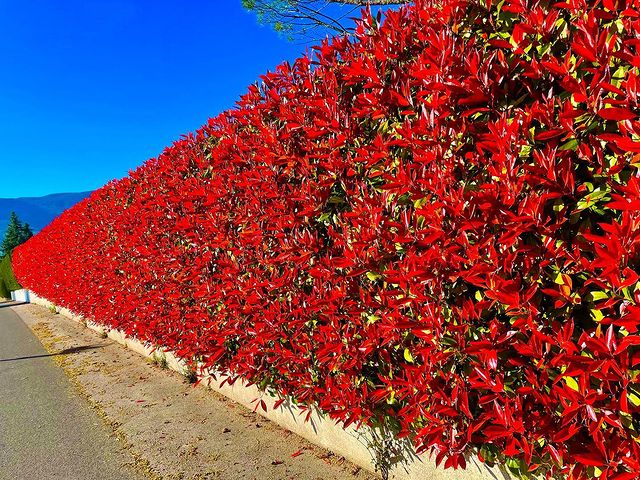
What shrubs bloom the longest?
Some of the longest blooming shrubs are Butterfly bushes (Buddleia spp.), Hydrangeas (Hydrangea spp.), and Encore azaleas (Rhododendron spp.).
Are there dwarf arborvitae?
Although full-sized arborvitae trees, which belong to the Thuja genus, commonly reach 30 to 40 feet, many popular dwarf arborvitae species exist. The more popular ones are Dwarf Golden arborvitae, Giant dwarf arborvitae, and Golden globe arborvitae.
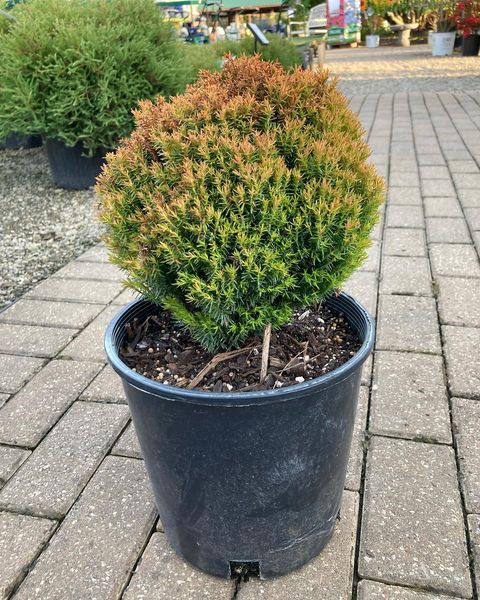
Editor’s Recommendations
21 Amazing Plants That Start With A (Including Pictures)







